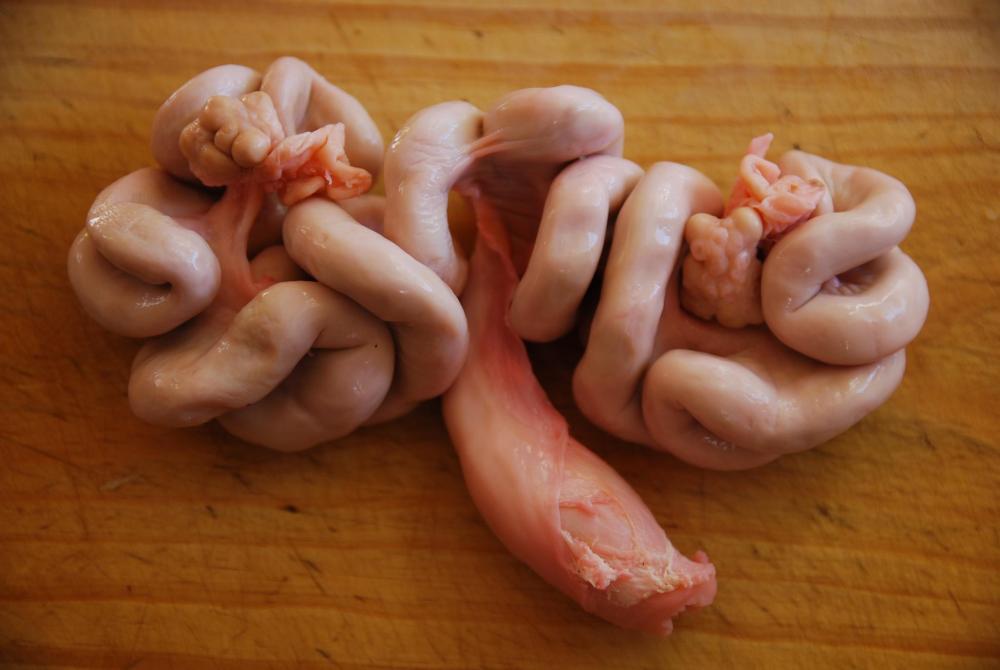Here’s a bit of pig you are extremely unlikely to come across by accident. 生肠 / 生腸 (Mandarin Pinyin: shēng cháng; Cantonese: sang cheong), these are the lady animal’s fallopian tubes (and sometimes the uterus), which are usually stir fried. A traditional Singaporean dish, it is harder to find there than previously although it can still be found in neighbouring Malaysia.
Pig's Fallopian Tubes
The tubes are pretty tasteless on their own, but have a crunchy, springing texture which is much appreciated and they take on the flavours of the accompanying ingredients, usually onion, garlic, ginger and hot sauce. They are also often served as 蝦米生腸 (Cantonese: har mai sang cheong), fallopian tubes with dried shrimp, which can bring pungent tastes to the dish. Despite being a Mandarin speaking area, Singapore uses the Cantonese name.

蝦米生腸 (Cantonese: har mai sang cheong), fallopian tubes with dried shrimp
These are sometimes incorrectly described in English as intestines as they visually resemble the said organs and because the same Chinese character (肠/腸) is used in both.
I've never heard of them being served in mainland China, although they are sometimes seen as street food in Hong Kong. Frog's fallopian tubes (hasma) are used to make a dessert.



